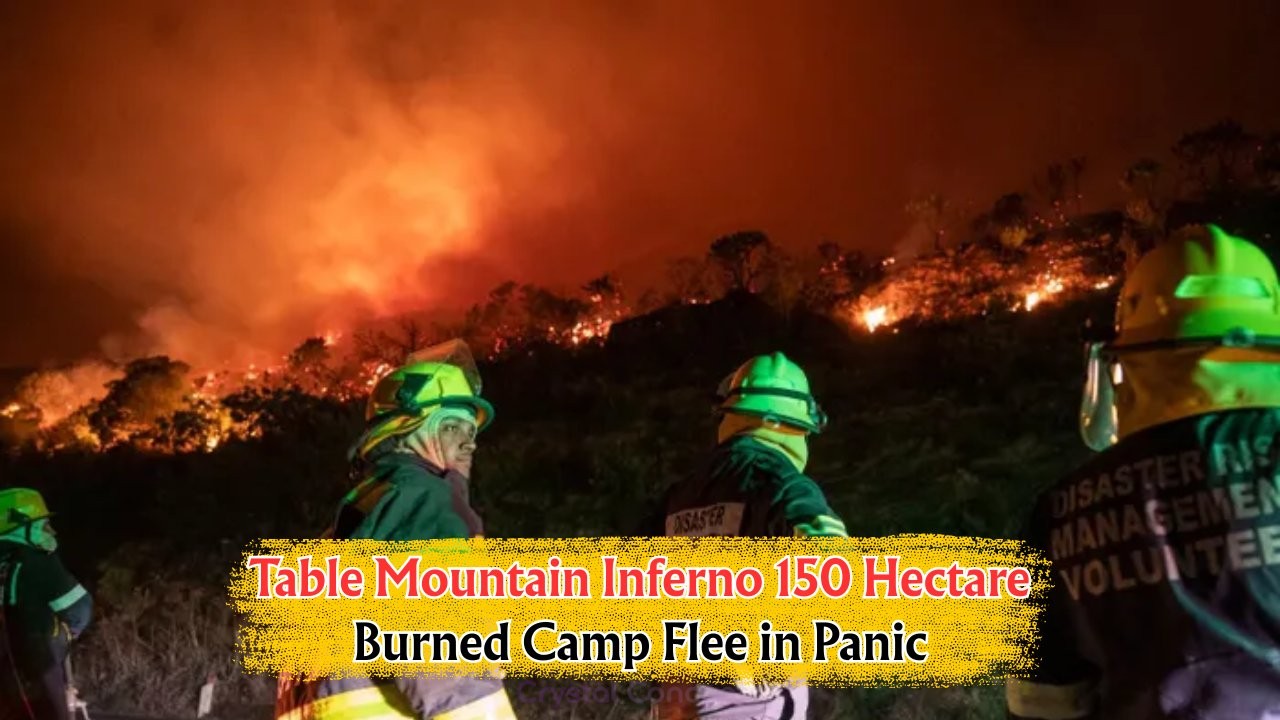July Blaze on Table Mountain: In the heart of Cape Town, Table Mountain is known for its majestic beauty and iconic status. However, during the month of July, this natural wonder faced an unprecedented challenge as a massive wildfire swept through its slopes. The blaze not only threatened the biodiversity of the mountain but also sparked an urgent evacuation alert for nearby residents. Fueled by dry winter winds, the fire quickly escalated, prompting swift action from local authorities and fire services. Residents and visitors were urged to evacuate as the flames threatened homes and infrastructure, highlighting the need for emergency preparedness in the region.
Impact of the July Fire on Table Mountain
The July wildfire on Table Mountain had far-reaching effects, both environmentally and socially. The destruction of vegetation and wildlife habitats caused significant ecological damage, with long-term consequences for the mountain’s delicate ecosystem. The fire also posed a direct threat to human settlements, leading to the evacuation of several communities. Firefighters faced daunting conditions as they battled to contain the blaze, working tirelessly to protect lives and property. The financial impact of the fire was substantial, with costs associated with firefighting efforts, rehabilitation, and restoration of affected areas.
- Destruction of indigenous flora and fauna.
- Loss of public access to hiking trails and park areas.
- Displacement of local wildlife species.
- Significant air quality deterioration due to smoke.
- Temporary closure of tourism facilities.
- Economic loss for local businesses reliant on tourism.
- Increased risk of soil erosion and landslides.
- Heightened community anxiety and stress levels.
Community Response to Table Mountain Fire Evacuations
In response to the evacuation alert, the Cape Town community demonstrated resilience and solidarity. Local organizations and volunteers mobilized to support those displaced by the fire, providing shelter, food, and essential supplies. Social media platforms became vital tools for communication, enabling quick dissemination of information and coordination of relief efforts. Residents heeded evacuation notices, prioritizing safety and cooperating with emergency services. The crisis underscored the importance of community preparedness, highlighting the need for comprehensive evacuation plans and regular drills to ensure readiness for future incidents.
- Community shelters set up to house evacuees.
- Donations of food and clothing from local businesses.
- Volunteers assisting with logistics and distribution.
- Social media used for real-time updates and alerts.
- Collaboration between local government and NGOs.
- Public appeals for fire-fighting equipment donations.
- Emotional support services offered to affected families.
Environmental Repercussions and Recovery Efforts
The environmental repercussions of the Table Mountain fire were profound, affecting the region’s unique biodiversity. Recovery efforts began immediately, focusing on rehabilitating the burnt landscape and restoring native plant species. Conservationists and ecologists are actively working to mitigate soil erosion and promote regrowth. Initiatives include replanting indigenous flora, monitoring wildlife populations, and implementing erosion control measures. These efforts aim to restore the mountain’s natural beauty and ecological balance, ensuring its continued role as a vital habitat and tourist attraction.
Post-Fire Rehabilitation Initiatives
- Replanting of fynbos and other native vegetation.
- Monitoring and protection of endangered species.
- Erosion control measures to prevent soil degradation.
- Research on fire-resistant plant species.
- Educational programs for public awareness.
- Collaboration with local universities for ecological studies.
- Regular progress assessments and reporting.
Table Mountain Fire: Lessons Learned for Future Preparedness
The July blaze on Table Mountain serves as a stark reminder of the importance of fire preparedness and risk management. Authorities and communities are now reflecting on the lessons learned to improve future response strategies. This includes enhancing early warning systems, investing in fire-fighting resources, and developing comprehensive community evacuation plans. Education campaigns are being launched to raise awareness about fire prevention and the role of climate change in increasing fire risks. By learning from this incident, Cape Town aims to strengthen its resilience against future wildfires.
- Improved early warning and communication systems.
- Investment in modern fire-fighting equipment.
- Regular community fire drills and training sessions.
- Increased funding for environmental conservation.
- Integration of climate change considerations in planning.
- Development of firebreaks and buffer zones.
- Engagement with international fire management experts.
Fire Impact Summary
The following table summarizes the key impacts and responses related to the July blaze on Table Mountain:
| Impact | Response |
|---|---|
| Environmental Damage | Rehabilitation and replanting efforts |
| Evacuation of Residents | Community shelters and support |
| Economic Loss | Business aid initiatives |
| Wildlife Displacement | Habitat restoration projects |
| Air Quality Issues | Health advisories and masks distribution |
| Tourism Impact | Recovery marketing campaigns |
Understanding Fire Risk in South Africa’s Natural Areas
South Africa’s diverse landscapes, while beautiful, are increasingly at risk of wildfires. Factors such as climate change, human activity, and invasive species contribute to heightened fire risks across the country. Understanding these risks is crucial for effective management and prevention. Educational initiatives aimed at promoting fire safety and awareness are vital in reducing the incidence and impact of wildfires. Collaboration between government agencies, conservationists, and the public is essential to safeguard South Africa’s natural heritage.
Fire Management Strategies
- Regular assessment of fire-prone areas.
- Implementation of controlled burns to reduce fuel load.
- Public education campaigns on fire safety.
- Development of fire management policies and plans.
- Investment in research on fire-resistant ecosystems.
- Collaboration with international fire management agencies.
- Community engagement and involvement in prevention efforts.
Table of Fire Preparedness Measures
The table below outlines crucial measures for enhancing fire preparedness in South Africa:
| Measure | Details |
|---|---|
| Early Warning Systems | Installation and maintenance of detection technology |
| Fire-Fighting Resources | Procurement of modern equipment and training |
| Community Education | Workshops and awareness campaigns |
| Conservation Efforts | Protection and restoration of natural habitats |
| Policy Development | Formulation of fire management strategies |
| International Collaboration | Partnerships with global experts |
Frequently Asked Questions
What caused the July fire on Table Mountain?
The exact cause is under investigation, but it is suspected to be a combination of dry weather and human activity.
How can residents prepare for future wildfires?
Residents can prepare by having an evacuation plan, maintaining defensible space around their homes, and staying informed through local alerts.
What role does climate change play in wildfires?
Climate change contributes to more frequent and intense wildfires by altering weather patterns and increasing temperatures.
How are authorities addressing the aftermath of the fire?
Authorities are focusing on rehabilitation, community support, and developing better fire management strategies for the future.
Can tourists still visit Table Mountain after the fire?
Yes, while some areas may be temporarily closed for restoration, many parts of the mountain remain open to visitors.










